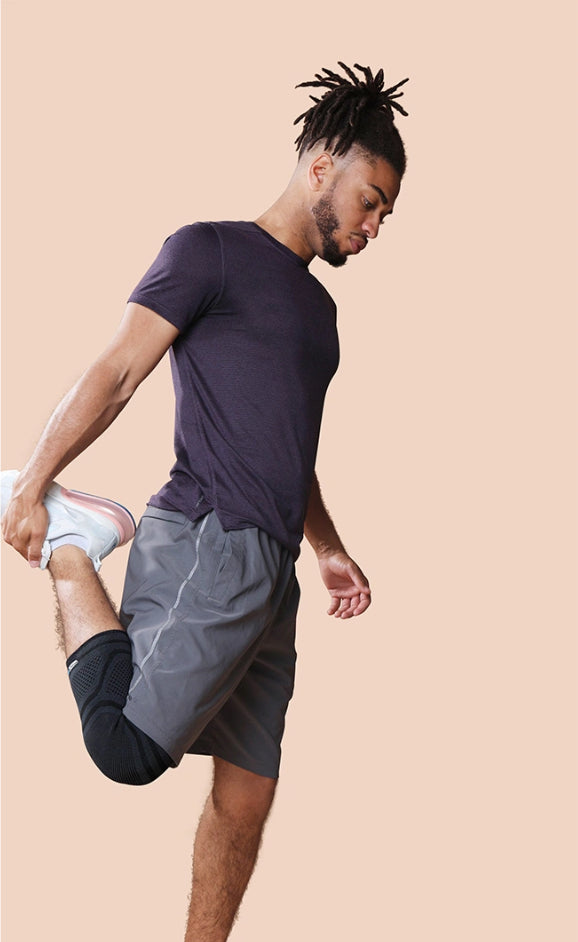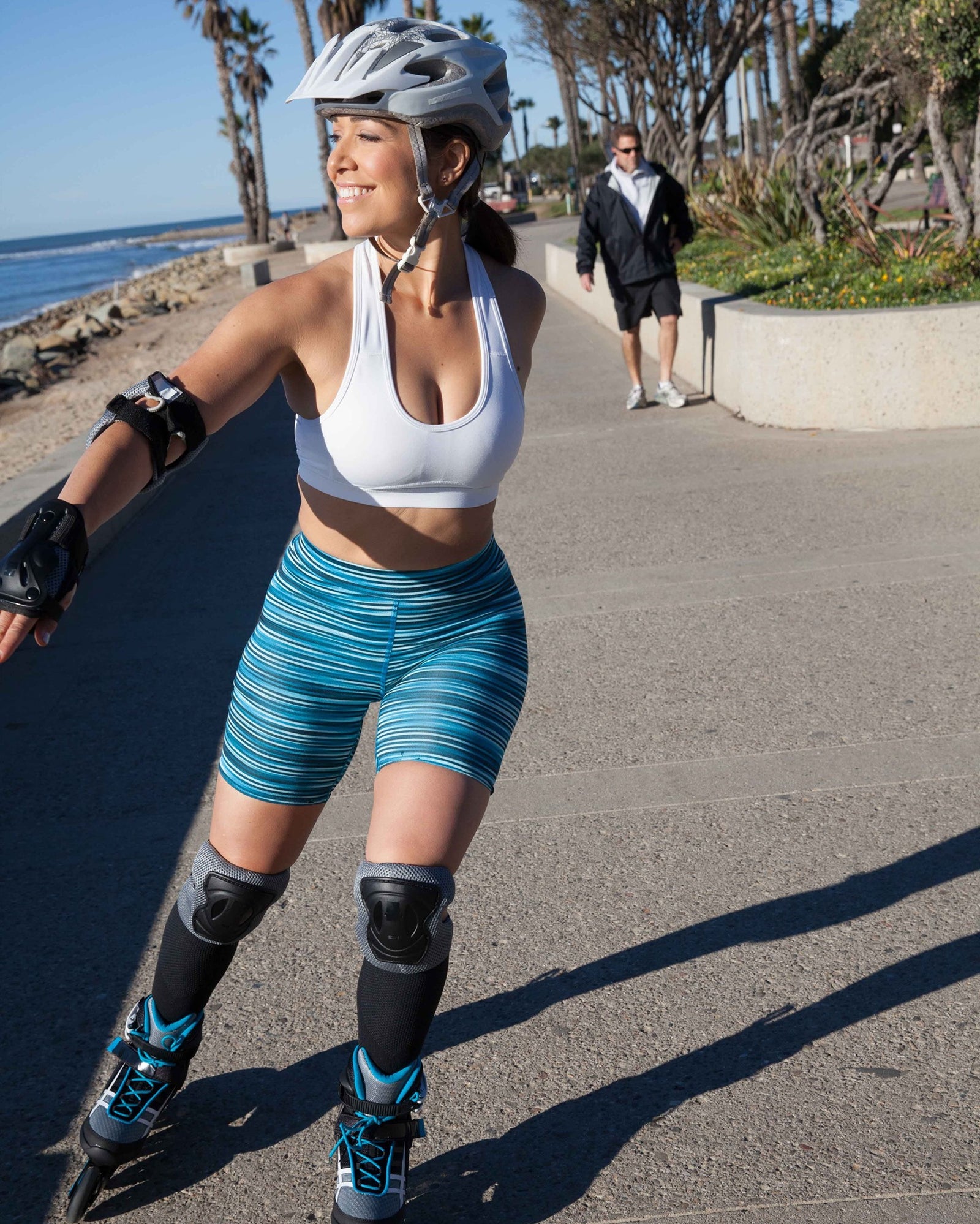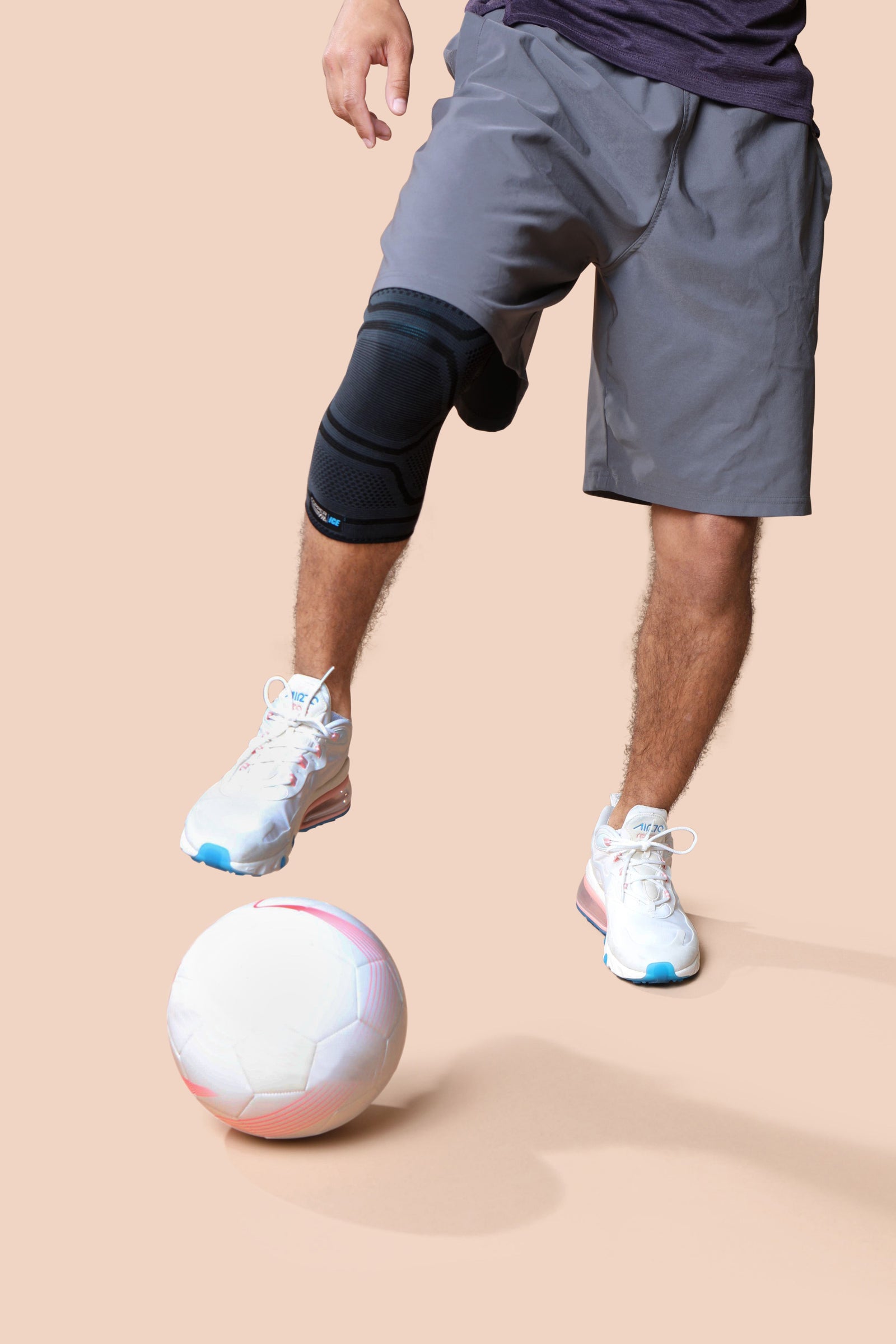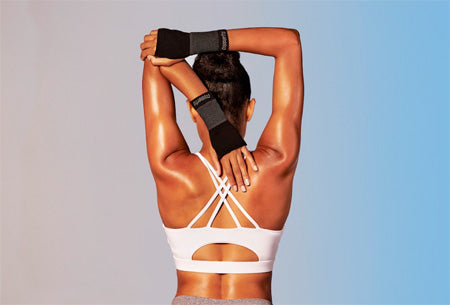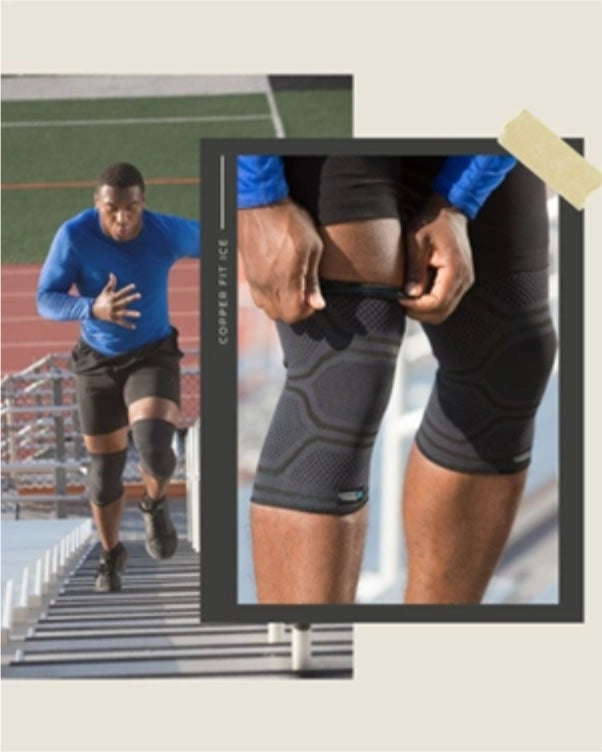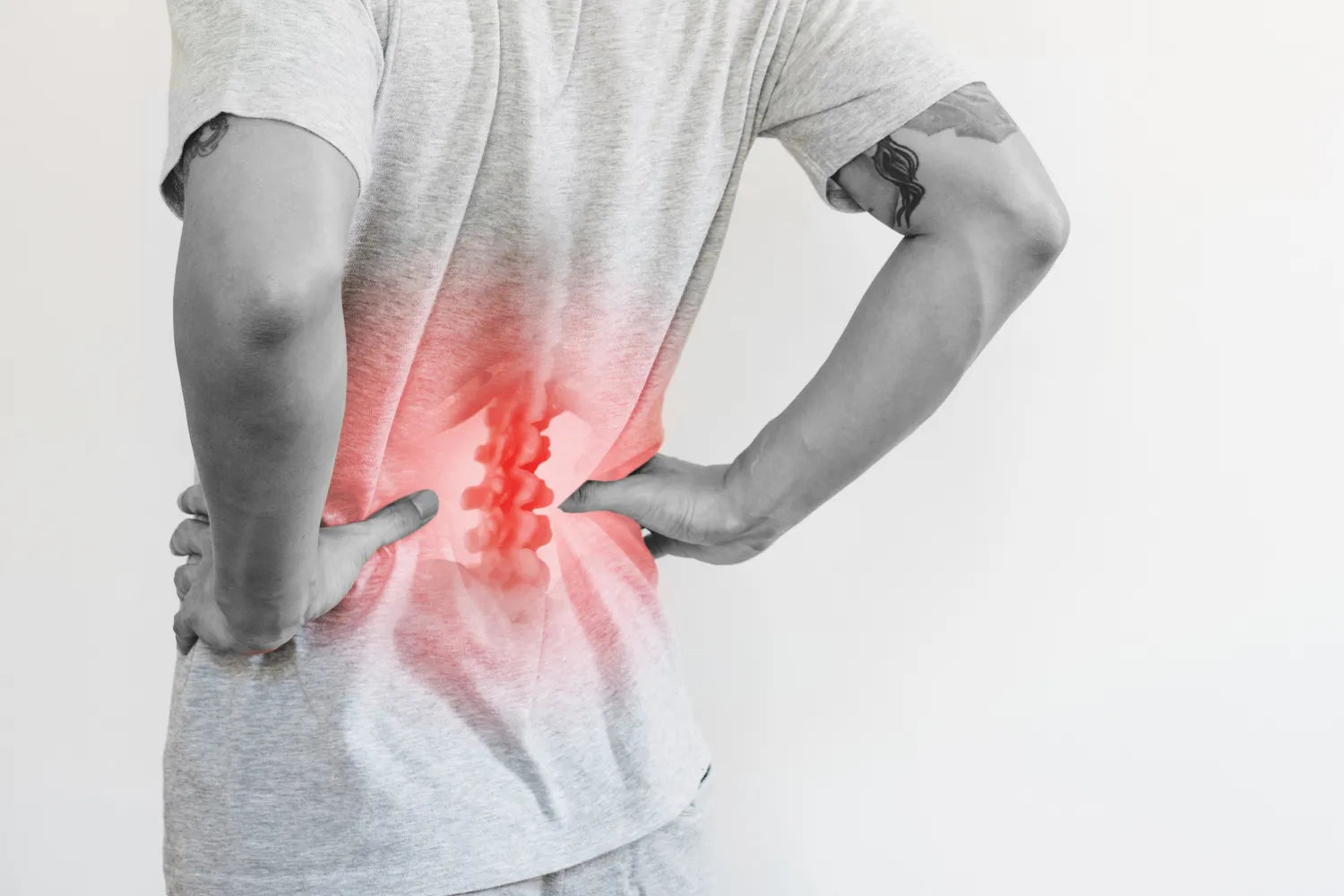
Key Takeaways
-
Muscle strain and disc injuries have different causes and symptoms. Muscle strain is usually localized and short-term, while disc issues often involve nerve symptoms like tingling or weakness.
-
Managing back discomfort starts with identifying the root cause and taking supportive action, such as applying hot or cold therapy, gentle movement, and using gear that promotes recovery.
-
Building core strength, improving posture, using compression gear or back supports, and being mindful of movement can all help reduce the risk of future back issues.
Back discomfort is one of the most common reasons people take time off from work, modify their workouts, or feel discouraged about staying active. Whether it hits after lifting something awkwardly or creeps in from long hours at a desk, back tension can slow you down fast.
Not all back issues are the same. One of the most important steps to recovering effectively is figuring out what kind of discomfort you're dealing with. The approach can be very different depending on whether it's muscle-related or caused by a disc issue in the spine.
This guide will help you break it down in a way that’s straightforward, informative, and supportive, so you can better understand what’s going on with your body and take action that helps you move forward.
What Is Muscle Strain?
Muscle strain and disc injury are two of the most common culprits behind back discomfort, and while they can sometimes feel similar, they come from very different sources.
Muscle strain happens when the muscles or soft tissues in the back get overstretched or torn. This might be due to lifting something heavy with poor form, twisting suddenly, or pushing yourself a little too hard during a workout. It’s common, usually not serious, and often improves within a few days with the right kind of rest and support.
What Are Disc Injuries?
Disc injuries, on the other hand, involve the spine. Your spine is made up of vertebrae with small, soft discs in between that act like cushions. When one of these discs becomes compressed, bulges out, or ruptures (what’s commonly called a herniated disc), it can press on nearby nerves, causing symptoms that may spread beyond your back.
Understanding the root cause of your discomfort can help you choose the right recovery strategy and avoid making things worse by guessing.
Signs Your Back Discomfort Is a Muscle Strain
If your back discomfort is coming from a muscle strain, the symptoms usually stay local and feel more like soreness or tightness than sharp pain.
Here’s what you might notice:
- A dull ache in your lower or mid-back
- Stiffness that gets better with movement
- Soreness after a specific activity, like lifting or bending
- Tenderness in one specific spot
- Feeling better after using cold or heat therapy
Muscle strain can feel frustrating, but it’s generally manageable. In most cases, your body is doing exactly what it should—signaling that something needs rest and attention. With support, gentle movement, and a little time, these kinds of injuries usually resolve on their own.
Signs Your Back Discomfort Is a Disc Issue
Disc-related discomfort can be more intense, longer-lasting, and often involves symptoms that extend beyond the back.
Here are a few common signs of disc injury:
- Sharp or shooting discomfort in the back or buttocks
- Tingling or numbness that radiates down one leg
- Weakness in the legs or feet
- Discomfort that worsens when sitting, coughing, or bending forward
- Feeling better when standing or walking rather than sitting
One major indicator that you're dealing with a disc problem is the presence of nerve-related symptoms. If you notice tingling, numbness, or weakness—especially on one side of the body—it’s a good idea to talk to a doctor sooner rather than later.
How To Manage Back Discomfort at Home
Whether you're dealing with a tight muscle or a cranky disc, there are steps you can take at home to support your recovery and soothe tension.
For Muscle Strain
- Use cold therapy in the first 24 to 48 hours to help reduce swelling
- Switch to heat therapy after that to encourage relaxation and circulation
- Take short walks or try gentle stretches to avoid stiffness
- Avoid long periods of bed rest—movement helps recovery
- Wear supportive gear like back supports to ease soreness during daily activity
- Try a deep tissue massage to help promote muscle relaxation
For Mild Disc Discomfort
- Stay mobile—light movement helps prevent further tension
- Avoid heavy lifting, twisting, or high-impact activities
- Use both hot and cold therapy depending on how your body responds
- Pay attention to posture when sitting, especially at a desk or in a car
- Use ergonomic tools to reduce pressure on the spine
Remember, any new recovery tools or techniques should be used thoughtfully and with your comfort in mind.
Simple Tips for Preventing Future Back Issues
Supporting your back isn’t just about recovery—it’s about preparation. Small daily habits can make a big difference in how your body performs and how it bounces back.
Strengthen your core
A strong core helps support your spine and reduces the strain on your back during daily movement. Incorporate exercises that target your abdominals, obliques, and lower back to build balanced strength over time.
Warm up before any physical activity
Warming up gets your muscles ready and increases blood flow before activity, which may help reduce the likelihood of muscle strain. Include dynamic stretches and gentle movements before workouts, yardwork, or lifting tasks.
Take movement breaks throughout the day
If you’re seated at a desk, in the car, or on a couch for long periods, make it a habit to stand, stretch, or walk around every 30-60 minutes. Movement helps relieve stiffness and supports healthy circulation.
Use compression gear or back supports
Compression gear, lower back supports, and wraps can offer gentle pressure and stability during or after physical activity. By supporting circulation, they can maintain healthy oxygen flow and keep your muscles feeling their best.
FAQ
How can I tell the difference between muscle strain and a disc injury?
Muscle strain usually causes soreness in one spot and gets better with light movement. Disc injuries may include nerve symptoms like tingling, numbness, or shooting discomfort that radiates down the leg.
What can help with back discomfort at home?
Start with cold or heat therapy, gentle movement, and supportive gear like compression sleeves or wraps. Avoid bed rest and focus on posture and flexibility throughout the day.
Is it okay to keep working out with back discomfort?
It depends. Mild soreness may improve with movement, but sharp or radiating discomfort—especially with nerve symptoms—should be evaluated by a healthcare provider before continuing activity.
The bottom line
We know what it’s like to feel limited by tension, soreness, or the frustration of not moving the way you want to. That’s why we believe in breaking things down simply, so you can understand what’s going on and make the right call for your body.
Whether your discomfort is from a strained muscle or a deeper issue like a disc injury, you deserve tools and knowledge that keep you feeling strong and capable. This guide is here to help you tune in, take action, and move forward with confidence.
You’ve got this, and we’re here to support you every step of the way.
Sources:
Muscle Strains: Causes, Symptoms, Treatment & Recovery | Cleveland Clinic
Herniated disk - Symptoms and causes | Mayo Clinic
Posture | Better Health Channel

